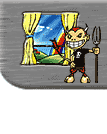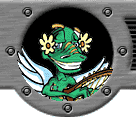





 |
 |
 |
||
 |
 |
 |
||
|
|
|
|
|
|
| Home : Humanistic Module : Online Reading 1 | ||
The Teaching Roleby J'Anne EllsworthConstructing the Enhanced Teaching Roles Reinsmith (1992) wrote a book about the blending of teacher, student and content. His continuum that illustrated the ways teachers and students might behave in the classroom moved from the completely teacher dominated model to the completely student dominated model. In each of the four settings that he illuminated, the role of teacher and student changed. The interrelationship with content was affected, and the leadership and management of the classrooms altered. In the current, effective instruction model, the State and District determine the content that will be taught and the teacher writes out lesson plans and instructs with basals, worksheets, study guides. Every step of the process is based on one dimension and set of roles - teacher as disseminator, student as recipient. The Constructivist movement - at least a century old in ideas - perhaps as old as Socrates and his teaching ideas - suggests sliding the roles around to fit the content and the situation as well as looking at the needs of the student. It sounds simple, but when teachers attempted the changes, it became clear that there are additional skills that both teachers and students need to be successful at moving into new ways of working and thinking. Relationship is one of the first major changes. In more inter-related teaching and learning models, it plays a prominent role in changing the classroom from teacher directed to person and learning centered. This points to the first set of issues:
Teacher and student roles change:
If the changes are to be implemented in classrooms, teachers need assistance in understanding the different teaching roles and practice in implementing new skills in various settings and structures. A mind map showing the differences may help those who are visual learners. Teachers and students also need concepts in community building. Each participant will need practice in the varying skills along with patience with self as the new skills emerge. As the teacher develops new teaching skills, new issues in self and student management present themselves. While a teacher maintains an "in charge" position, there are many challenges to authority. The current school handbooks and school law are set up to assist teachers in handling these challenges and removing students who consistently push limits. As the teacher moves into the community of learning position, the challenges change. Since the challenges are novel to the classroom setting, less has been written about them and fewer mechanisms are in place to assist the teacher in working through them. The Autocratic Position, hallowed in educational practice, is ineffective and inhibitory. The idea of abandoning the safety of that position may also be inhibitory. As the teacher moves from central authority to shared authority, the students and student roles also change. Students may never have experienced shared power. Much of the student population will need assistance in understanding the new roles and in assuming the responsibilities inherent in democratic governance. Respect for self and others must be taught through interaction and experience. Understandably, it is a life long journey, not a set of lessons or skills. Teaching and practicing respect will be a part of the daily curriculum. The same is true of sharing responsibility for self, for the community and for learning. Learning New Teaching StylesNone of these styles of teaching is entirely new. Some are more easily adapted to specific subjects than others. These gears provide a graphic representation of the systemic interrelationship of content, teaching role and student role in the varying learning settings. The roles include:
As the roles change, the type of learning community situation changes as well. It is clear from teacher experiences and leadership research, that more is involved in situational leadership changes than just changing the task. The teacher assumes a novel way of “being in the classroom” in each setting. That means that the responses are different, time constraints change and in some instances, I will be involved in learning new roles and behaviors. It certainly is true for students. Each of the four learning settings involves specific types of student behaviors and practices. These can be delineated and taught. If the evolution of the learning community is to occur, students will need assistance in recognizing and acquiring the new skills and behaviors. Then they will need assistance in practicing, monitoring and fine tuning the skills.
As I move from the teacher centered classroom to the learning community, the role of teacher changes. When I first implemented this role in my classes I perceived resistance. Some of the resistance came from me as I moved forward from the familiar, the ritual, the pattern that had previously defined my teaching. Part came in trying to develop and implement new steps, new methods, new ways of moving and using time. I also found that there was real resistance from the students. Initially I thought that it came from my lack of expertise and from not being clear enough about the changes. I found, after several semesters, that this was not the case. The students were countering my moves, working to maintain the familiar teaching role. Now I set the up the classroom so that the students and I move together in defining, practicing and playing a new role. I try to shift toward giving the students more responsibility and empowering them to take responsibility for their progress in education. Some students excitedly moving into the new role, but I find I am still being urged back into the old role by most of my students. Their body language expresses discomfort and sometimes displeasure. They open class sessions with questions that show they are entertaining frustration that also translates into low key anger and resistance. Some of the students respond to my new role with a sense of safety or closure, but most respond to their role of empowerment with suspicion and resistance. I continue to work with students, to reassure them and to consistently broaden their power base. After the first five weeks, I feel a sudden excitement as the notion catches on and the unfamiliar ground, the halting first steps, begins to smooth themselves from practice and familiarity. The continuum in the teacher's role is mirrored in the student role. The students are moving from being almost totally uninvolved in the acquisition of learning -- taking notes and listening, to a position where they feel fully engaged and personally responsible for education. Not only is the teaching role and student role moving on a continuum but at least two other continua also intertwine. Power and control play a major role. I hear and feel much resistance as we swing from teacher in control, making all the academic decisions and giving the grades, to teacher offering opportunities and suggestions, then offering students the responsibility for learning and evaluating. This violates many of the norms (long held expectations and unwritten rules) that teachers have about teaching and that students ascribe to teachers. Students typically respond with disbelieve, then anxiety. The teacher in power is a safety net. Not only does the staid definition of roles give the bulk of work to the teacher, it allows student to carp and complain, to give others responsibility for personal lack of effort and lack of motivation or attention to learning. Content has changing roles and a changing emphasis. When the teacher is disseminator, holder and tester of knowledge, the content has a tight focus. Much like a laser beam, the teacher provides a tight illumination of knowledge, supplemented by a text, tested in very specific, definable and quantifiable terms. There is little desire to thrash about in a plethora of shadow ideas. It is counterproductive to completion of units and chapters to digress. Students attuned to the tightly defined focus approach even complain about digression.
As we change our roles, we find content changing. The focus broadens from knowledge base to more natural ways of thinking about constructs. The students seemed to look for the interface with application almost automatically. We enter Blooms' Taxonomy from a different place. Because the work begins at the application phase and involves activities which students find meaningful, extension of learning is inevitable rather than contrived. The depth of mastery and sense of integration unfold with richness and diversity. Thematic units occur as the students share findings and present activities to the group. The content issues become finding time enough to learn all that is beckoning rather than making enough progress through units. By naturally entering the content continuum at the middle, we gain assistance from human development. By working at what the students are ready to learn, what has value to them, the kinds of things that are self-motivating and self-exciting, there's a natural enthusiasm and energy in learning the material. It is very similar to the tremendous push that a toddler exhibits while trying to learn to walk. Walking is developmentally appropriate for that young child and walking becomes almost an obsession. By changing the roles and the construction of what we learn, the student or the maturing adult becomes as enthralled and energized with learning as they once were with walking and talking. Finally, we teach process skills as part of the intertwined content. By doing so, we are preparing the student to take full responsibility for learning and for themselves as participants in the learning community. Some of the process skills that are important at this level are self-discipline, respect for self and others or mutual respect, and building trust in the teacher, within group, trust in self as a learner and participant. Collect a
Interesting links:
Once you have completed this topic you should: Go on to
Assignment 1
|
||
| E-mail J'Anne Ellsworth at Janne.Ellsworth@nau.edu | ||
|
Course Created by J'Anne Ellsworth & Center for Technology Enhanced Learning Copyright
© 2001 Northern Arizona University |
 |
 |
 |
 |
 |
|